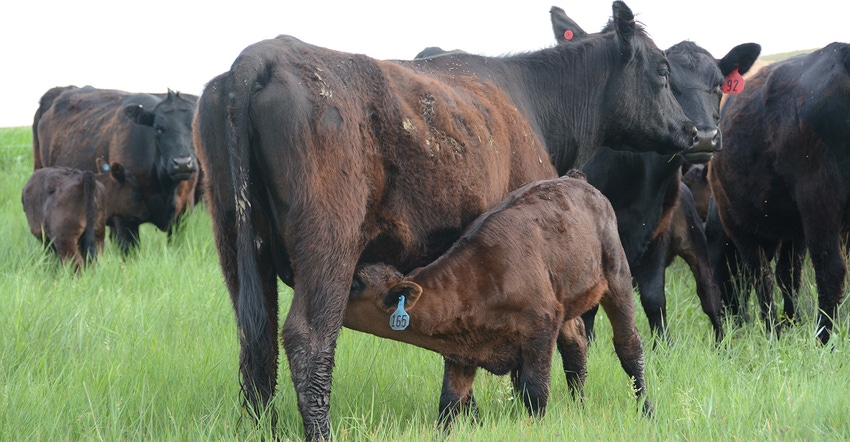Boosting cow pregnancy rates after AI
Nutrition, dietary changes and shipping can all impact your calf crop.
July 5, 2019

Do you know the stages of embryo development in a cow? How many weeks it takes a cow’s body to recognize it’s pregnant? What things immediately before and after a cow is bred affect pregnancy success?
George Perry, a professor and Extension beef reproductive management specialist with South Dakota State University, is making it his mission to make sure you know the answers to these and other questions. The knowledge will ultimately help you boost your cow herd’s pregnancy rates and subsequent calf crop, he says.
Biology basics
The stages of embryo development in the first 42 days are:
Day 0 — estrus
Day 1 — ovulation and fertilization
Day 2 — first cell division
Day 3 — 8-cell stage
Days 5-6 — migration to uterus
Days 7-8 — blastocyst (differentiation of cells)
Days 9-11 — hatching
Days 15-17 — maternal recognition of pregnancy
Day 19 — attachment to the uterus
Day 25 — placentation
Day 42 — definitive attachment of the embryo to the uterus
Day 285 — birth
“In the first two weeks she (the cow) doesn’t know she’s pregnant … and, it’s not until Day 42 that the embryo starts drawing the nutrients it needs,” Perry says.
During the first month after fertilization the embryo is free floating in the uterus living off secretions. So, nutrients can affect survival and anything we do to change those uterine secretions can have a tremendous impact on survivability of that embryo.
For these reasons, nutrition — especially consistency of nutrition — is critical immediately before and during the 42 days after breeding, Perry says.
“Animals need to be on a good plane of nutrition to supply the nutrients to that embryo during its early development before it is firmly attached to the uterus and can draw nutrients from the animal.”
Change is bad
Changing a cow’s diet in the first 42 days after being bred is a bad idea.
In some studies heifers going from drylot to grazing lost as much as 3 pounds per day. Thirteen to 15 days after the diet change as many as 60% became stopped ovulating. Perry says studies have shown that even just a six-day restriction in nutrition prior to or after AI has been shown to be detrimental to embryo quality.
“Those with prior grazing experience outperform those without it,” Perry says. He cites a study that showed replacement heifers grazing all winter had a higher average daily gain than heifers that were fed in a drylot. Thus, he emphasizes that replacement females need some grazing experience several months prior to breeding.
“When we wean animals they transition from being with their mother to learning things on their own. What’s interesting is after their first year and weaning, their willingness to try new foods declines, which can affect the nutritional plane supplied to them.”
Adding supplements may help minimize the negative energy/nutrition balance. Perry reports that supplementing heifers that had no prior grazing experience after being AIed resulted in a 40 pound weight gain and a 15% improvement in pregnancy success. While a group of heifers put on pasture with no supplementation lost 5 pounds between AI and preg checking. For animals on forage, energy may be ample. But protein may need to be supplemented depending on forage quality.
If heifers are accustomed to a drylot setting and feeding scenario, continue with them in the drylot for the first 42 to 45 days after AI, so that their plane of nutrition does not change, Perry advises. It allows the embryo to develop and attach to the uterus.
Reconsider shipping, too
Shipping stress can also have an impact on pregnancy success. But when you should — and should not — ship bred animals may surprise you.
Perry says shipping AI animals within five days of breeding actually isn’t a problem. However, after Day 5 and up to Day 45 shipping should be avoided. The embryonic loss from shipping stress can be 5% to 10% during that time, Perry says. In one trial, bred females were shipped one hour to a facility on Day 45 to be ultrasounded and shipped an hour back. They experienced 6% embryonic loss as a result.
Gordon writes from Whitewood, S.D.
About the Author(s)
You May Also Like



